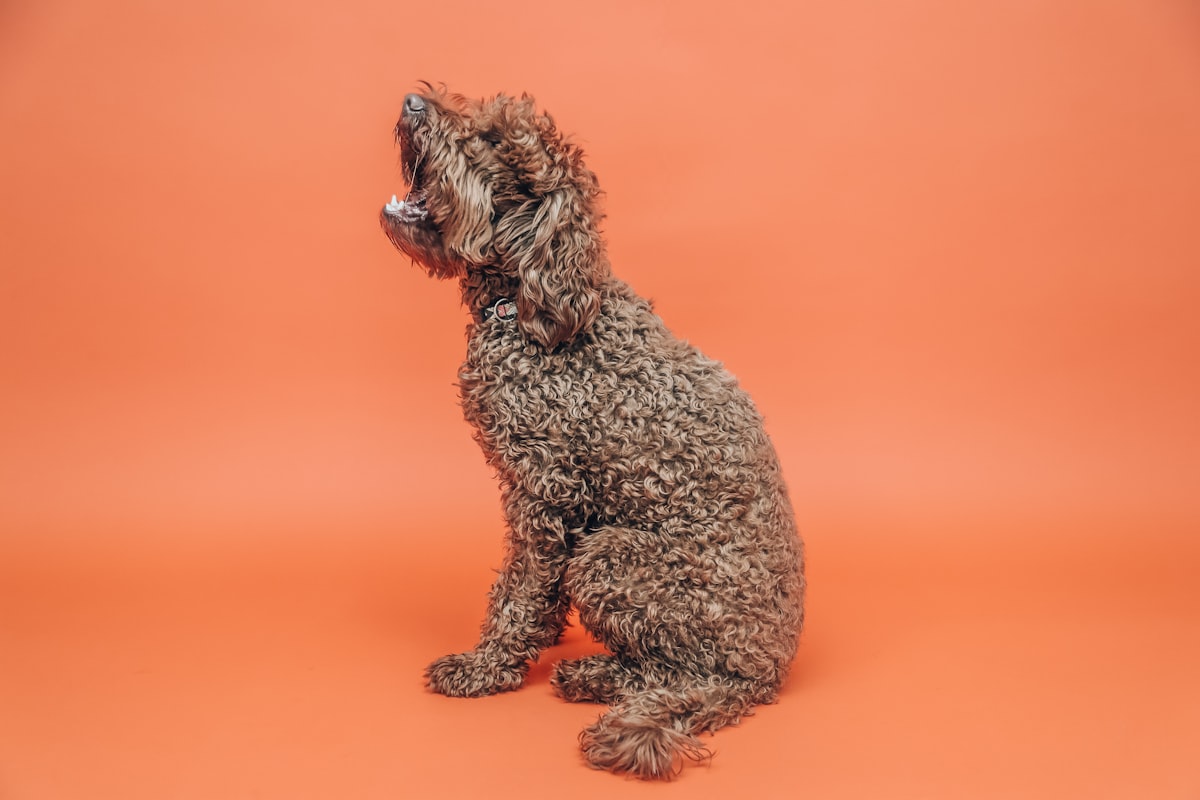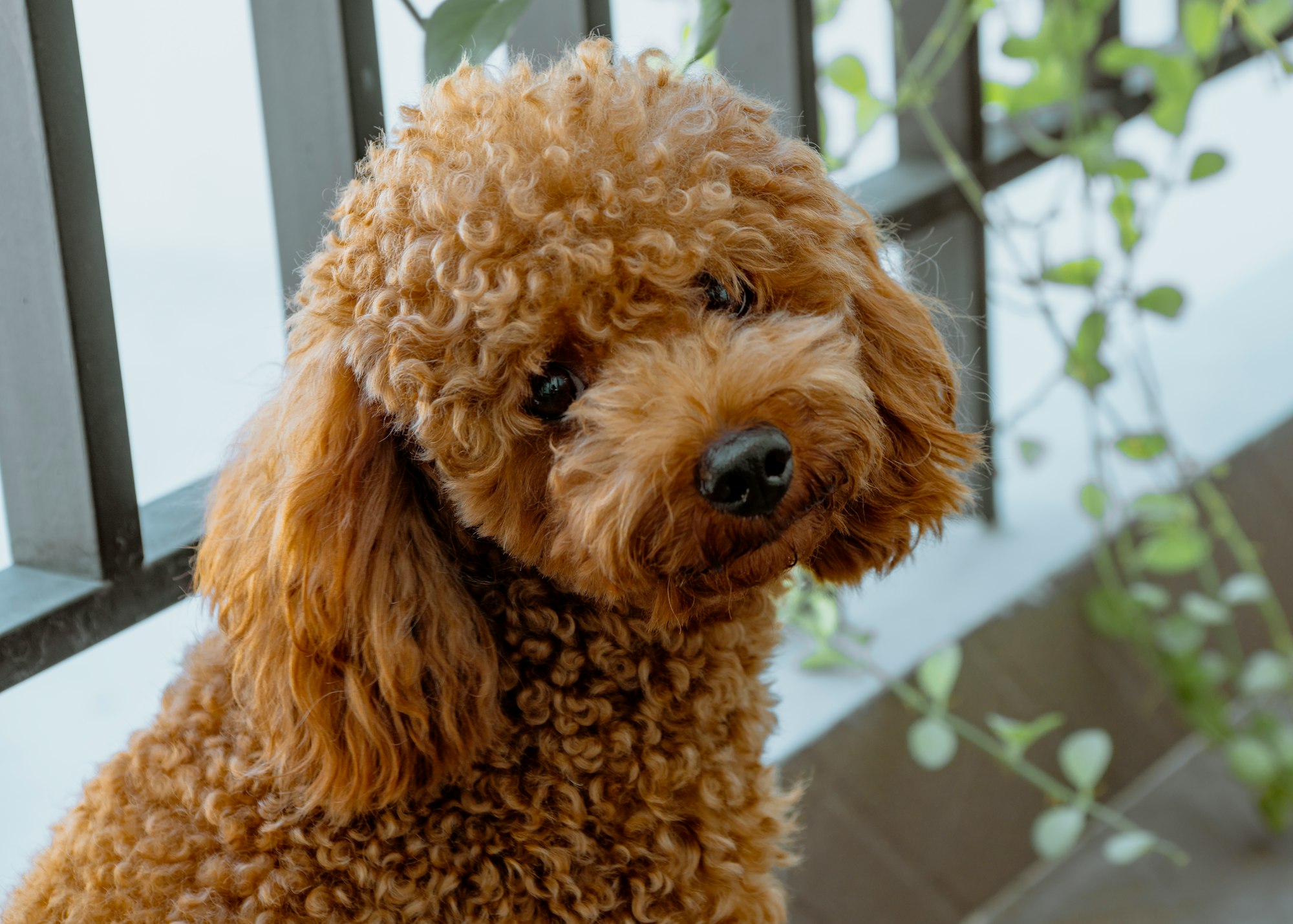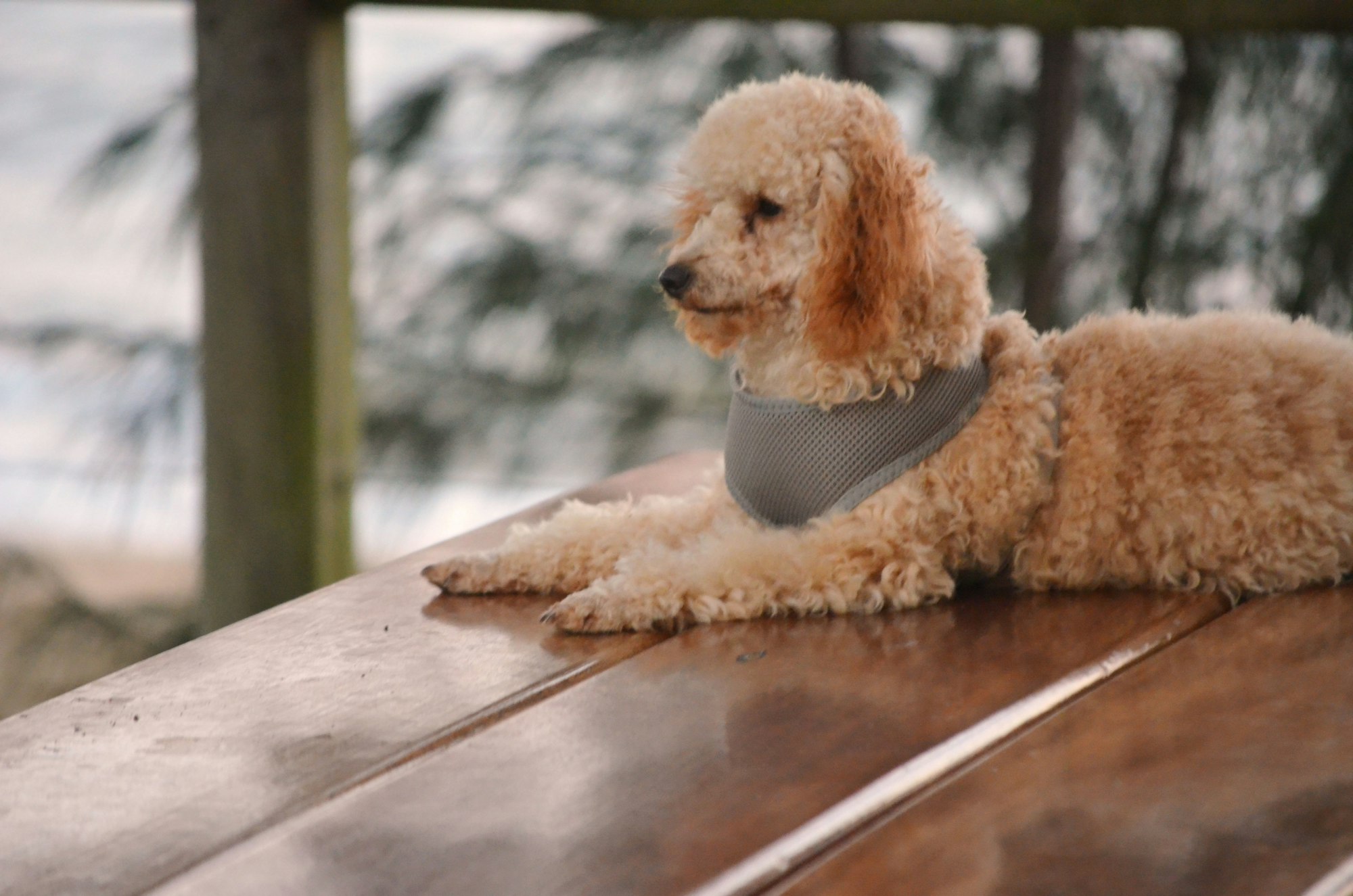Poodle Separation Anxiety: Can Poodles Be Left Alone?
Some of the most sensitive dog breeds that develop close relationships with their owners are Poodles. In their situation, separation anxiety is a bit challenging. This article will help you deal with your curly-haired friend's anxiety when you leave it at home alone. 🐩

Having a Poodle will make your life complete. Poodles are active and among most playful dog breeds, that require a lot of attention.
Are Poodles prone to separation anxiety?
Poodles are affectionate dog breeds that don't tolerate being left alone. Because of this, Poodles are prone to separation anxiety.
When left alone, Poodles are sad and think you left them forever. That's why the majority of them chew everything in their way or refuse to eat and drink. Puppies chew more often than adults.
That's why it is recommended to always leave your Poodle with family, friends, pet sitters, or at some pet hotels while you're gone.
Do all Poodles have separation anxiety? No, not all Poodles have separation anxiety (fortunately). Due to their intense commitment to their owners and high degree of intelligence, certain Poodles may be particularly vulnerable to separation anxiety.
How long can Poodles be left alone?
Researchers say that a Poodle can be left alone as much as they can hold going to the toilet. A kind of rule says that Poodles should be left alone for 1 hour per month of age. That means that 2 months old puppies can be left for 2 hours alone, and you can estimate for the rest of the months.
An estimated time to leave your adult Poodle alone is a maximum of 8-9 hours (available for 1-year-old Poodle, too).
- 1 month-old Poodle > 1 hour alone
- 2 month-old Poodle > 2 hours alone
- 3 month-old Poodle > 3 hours alone
- 4 month-old Poodle > 4 hours alone
- ....
- 9 month-old Poodle > 8-9 hours alone
- 1-year-old Poodle > 8-9 hours alone
- more than 1-year-old > 8-9 hours alone
**As your puppy grows you can observe his behavior. All dogs are different, so maybe your 1-year-old Poodle can stay only 3-4 hours without going crazy and without destroying your house. In this case, you will know his average hours and you will do somehow to train it increase the time spent alone at home. Or maybe you'll leave it with your family or friends.
But even though you leave your curly friend with the best conditions (water, food, accommodation), it can be very traumatic for it to stay alone.
📝 Personal note
When I was leaving my medium Poodle alone at home was happening to be no longer than 5 hours and not too often. I hated every time it was happening because I knew how much sadness he felt while we were gone.
When we were leaving him alone at home, he chewed everything he caught on his way: slippers, plush toys, clothes. He even pooped in bed, although he usually didn't use to. He was basically taking revenge on us for leaving him alone.
Also, he couldn't drink and eat at all until we came back home. When we were supposed to leave on vacation for more than one day and we couldn't take him with us, we left him with our aunt, who was taking good care of him.
How to know if your Poodle has Separation Anxiety

You must know that Poodles are one-person dog, which means that he chooses only one person to whom he gets attached. Once he chose you, your Poodle will strongly bond with you. However, it's easy to observe your curly friend's separation anxiety symptoms.
- Crying 😭
- Constant barking 🔊
- Destructive behavior 💥
- Depression 😞
- Uncontrolled behavior when you leave home 🤪
- Over excitement when you arrive home 🤩
Can Toy Poodle be left alone?

Toy Poodles can't be left alone for too long, because they are very affectionate, having a strong bond with you.
This sweet tiny dog might grow overly reliant on your presence and develop acute separation anxiety if left alone for lengthy periods of time. This can also lead to bad behavior, such as having house messes.
A recommended period of time when you can leave your Toy Poodle alone is a maximum of 8 hours. However, make sure he has a safe place to remain while you're gone by providing him with some clothing that smells like you.
Can Miniature Poodles be left alone?

Miniature Poodles are intelligent and energetic pets that love to be around people most of the time. They are also overdependent on their owner. When left alone, these cute curly dogs are the saddest. An adult Miniature Poodle can stay a maximum of 8-9 hours alone.
So, Miniature Poodle Separation Anxiety is real. If they are left alone for a lengthy or repeated period of time, they may engage in destructive behavior and develop separation anxiety. The same behavior and separation anxiety stands for Medium Poodles, too.
You must also be careful when you leave your dog alone. For example, if your dog is scared of strong sounds like thunder and fireworks, you should consider not leaving it alone when it rains or during holidays (New Year for example).
Can Standard Poodles be left alone?

Are Standard Poodles prone to separation anxiety? Yes, they are. Even though they are bigger than their Toy, Medium, and Miniature versions, Standard Poodles are strongly affectionate with their owners, too, so they can't stay more than 8-9 hours alone.
Standard Poodle's temperament is adventurous and playful. They prefer to be around people most of the time, and they really enjoy going on walks outside. As a result, untrained Standard Poodles are unlikely to tolerate long periods of cooped-up inside alone time.
Related Posts:
- 13 Facts About Poodle Dogs [Toy, Miniature, Standard]
- Are Poodles Lazy Dogs? Here's What You Must Know
- Are Poodle Good Guard Dogs? Interesting PoV
- Are Standard Poodles Aggressive?
How do I stop my Poodle from having separation anxiety?

In recent times, most owners are unable to give up their jobs in order to spend the first year of their Poodle's life with them. However, for such cases are some solutions to help decrease your Poodle separation anxiety while you are at work.
Preparing a proper environment for your dog is an important factor to consider.
Let's first start with what you should not do. Some owners go for leaving the dog inside a crate with food, water, toys, blankets, or a personal object that have their smell.
This idea may be good for a dog that is not so dependent on its owner's presence. Imagine that your dog is already stressed that you left him alone. Being in a crate for hours will stress them even more.
Another disadvantage is that your dog will make its toilet needs if you're gone for more than he could wait. So, in my opinion, the crate is not a solution when you are missing more hours from home.
👉 The following are the most effective ways to create a safe and relaxing environment for your dog when it is left alone:
-
Turning on the TV/radio. Leaving your TV/radio turned on as background sound. You could try The Animal Channel or other pet-related programs. These may comfort many Poodles. If you go for the radio, you could try a proper radio station that wouldn't disturb your dog. Therefore, you could test this method to see if the sounds of other animals or some music agitate your dog or if they soothe it.
-
Leave the lights on. Leaving at least one light on, can help destress your Poodle. A dark apartment is far more lonely than one that is lighter. Leaving a light on will provide a safer, calmer environment for your pup.
-
Create a safe haven. A safe haven is a favorite space for your dog where he stays when he feels lonely, scared or depressed. A safe haven is actually a safe space where your dog has all he needs until you come back home. Such an environment should have: food, water, toys, blankets, some object of yours, warm, light, pleasant sounds. This space must be far away from threats like sharp objects, flammable or toxic objects that may harm your dog if he gets agitated.
-
Having a window to watch nature, other animals or people from inside. Some Poodles enjoy when their living areas are near a window where they can see the world. This method is worth being tested to be verified to see if the dog will be distressed. Some dogs will bark at every bird, person, or animal that passes by, while others will appreciate the scenery and keep themselves engaged and happy just observing.
***Optional: you can get a camera to monitor your dog from the distance.
Conclusion: Do Poodles suffer from separation anxiety?
So, it's crucial to consider your options before acquiring a Poodle. This breed loves spending time with people, especially with their owners, with whom they form strong bonds. Even two minutes to empty the garbage is too much time for your Poodle because they detest being left alone. It will get thrilled when you'll get back, even though you were missing for such a short time.
Poodles are overdependent on their owners, but I promise you they are the best buddies to have in your life.
Hope you enjoyed this article! Love and paws until the next article! 🐾
Frequently Asked Questions
Can I leave my Toy Poodle alone for 8 hours?
It depends on your toy poodle. The factors you should take into consideration if you want to let your curly buddy 8 hours at home are: its age, previous experience when it was left home (if any), its bathroom breaks, its behavior when he/she is not around you.
Which size Poodle has the best temperament?
All four sizes of Poodles have the best temperament and are extremely similar to one another: joyful, affectionate, energetic, and funny. It is now up to you to decide what size dog you want.
Do Poodles have high anxiety?
Yes. They can strongly become attached to their owners, even though they are not born with this separation anxiety, making them particularly vulnerable to developing it.





Comments ()